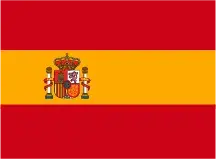Currently, Spain boasts a network exceeding 30,000 charging points spread across the country, installed by numerous Charging Point Operators (CPOs) responsible for driving this deployment.
Each station, depending on the installer, operates with a different payment application.
This forces users to download multiple apps to charge their electric vehicles at different points.

A study by Google reveals that, on average, Spanish citizens have at least 34 installed apps on their mobile devices, and 80 per cent of them are only used once.
In contrast, “the Portuguese model stands out for its focus on interoperability,” as highlighted by Carlos Ferraz, e-Mobility Director at PRIO.
In Portugal, interoperability is mandatory, meaning all CPOs wishing to enter the market must be connected to each other.
“This offers a significant advantage for users and is the first key that should be considered for implementation in Spain,” emphasized at the “Investments and new eMobility projects in Spain” event, organized by Mobility Portal España.
In this regard, he assures that in the neighboring country, it is possible to travel from north to south and even to the islands with just one card or application.
This approach not only benefits users and strengthens the development of electromobility but also proves advantageous for CPOs.
But, can interoperability limit competition or make it challenging to stand out in the eMobility market?
According to Ferraz, quite the opposite.
“Interoperability will enable smaller companies to enter the market and compete with larger companies, thus fostering competition in the sector,” he affirms.
Another relevant aspect expected to be replicated in Spain is the model of the charging point map implemented in Portugal.
This requires all points to be connected to a single government platform, accessible online to both CPOs and eMobility Service Providers (eMSPs).
In Spain, recently, the Dirección General de Tráfico (DGT) introduced the National Access Point, an online platform allowing drivers to check the availability of charging points.
Here, recharge service providers must send all updated data on their facilities to the Ministry for the Ecological Transition and the Demographic Challenge, and this information is updated on the map every 24 hours.
However, to provide users with the best experience, Ferraz emphasizes the importance of real-time information updates.
The range anxiety when driving an electric car, i.e., the fear of being stranded in a remote location without enough battery power to continue the journey, is often discussed.
However, the real anxiety lies not so much in autonomy itself but in the concern of not knowing where or how to recharge the vehicle.
Hence, a map compiling all available charging points is essential for planning routes.
Ferraz also observes a similarity between the Spanish and Portuguese markets in the considerable bureaucratic hurdles faced by industry players.
“It is necessary for governments to simplify processes to facilitate the progress and development of electromobility,” he indicates.

Currently, PRIO is one of the leading companies in installing charging points in Portugal, where it is electrifying its more than 250 petrol stations located from the north to the south of the country.
Now, the company aims to replicate this leadership in Spain and establish itself as a strong competitor.
To achieve this, it is carrying out a nationwide deployment, with its strongest location being the Canary Islands.
“This is because connection times to the network are faster there compared to the peninsula,” Ferraz details.








